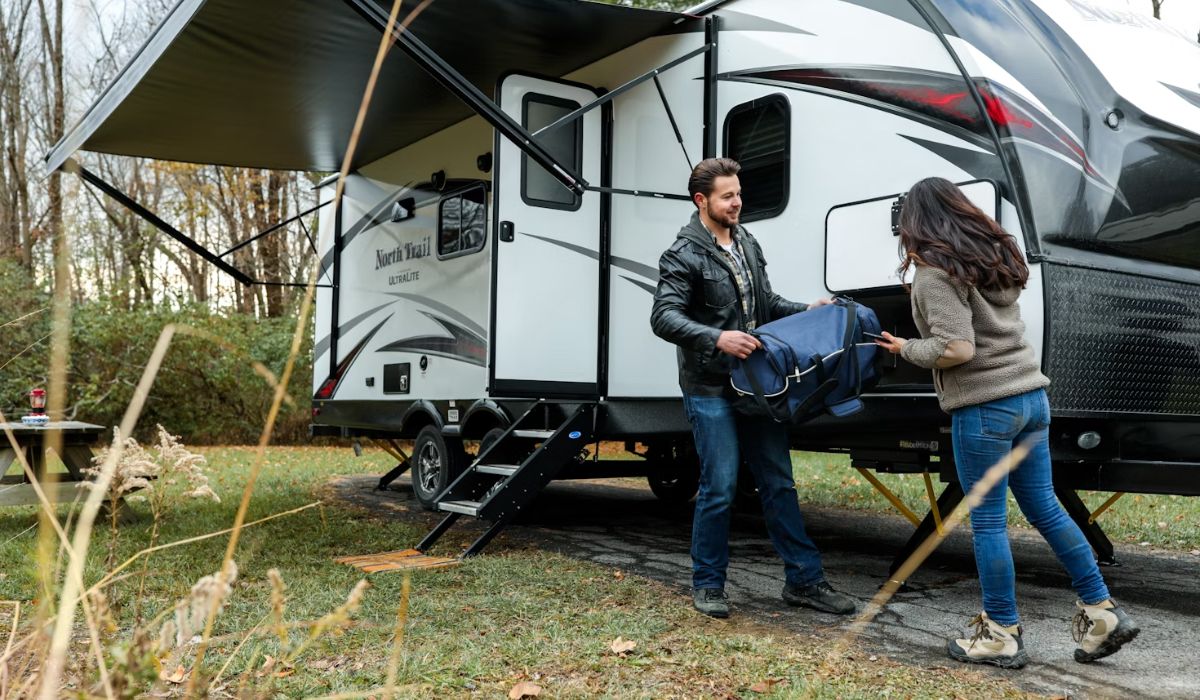Essential Tips and Tricks for Maintaining Your RV Awning on Your Travel Journey

As participants in Amazon Associates and other programs, we earn from qualifying purchases. This comes at no additional cost to you. For more details, see our Affiliate Disclosure.
Maintaining your recreational vehicle (RV) can sometimes be a daunting task, especially if you are new to the RV community. Among the many components that need your attention, the awning stands out as it plays a crucial role in providing shade and comfort during your travels. Therefore, understanding how to properly care for and maintain your RV awning is fundamental to a pleasurable journey. Here, we delve into some essential tips and tricks for maintaining your RV awning on your travel journey.
Understanding the Awning Structure
Before diving into specific maintenance procedures, it’s important to comprehend the structure and functionality of your RV’s awning. The fabric, typically made of vinyl or acrylic, is attached to a roller tube at its base and extends out on strong arms that provide support. Knowing the kind of fabric used on your awning can guide you on appropriate cleaning and maintenance methods. Maintaining your RV awning involves making decisions about the best fabric for your requirements, how to clean it, and steps to ensure its continued performance.
Cleaning Techniques
Regular cleaning that is appropriate for the particular material your awning is made of is necessary to preserve its longevity and general state. The method for cleaning your awning may vary depending on whether it is made of acrylic or vinyl. While acrylic awnings might need a little stronger cleaning solution, vinyl awnings usually take well to a light washing with mild soap and water. To stop any possible harm, it’s imperative to avoid using brushes or abrasive cleaners while cleaning. Making sure the awning is completely dry before storing it is equally crucial since it reduces the possibility of mildew or mould growing.
Preventing and Treating Mildew
Awning fabric, especially if it’s constantly exposed to wet and humid conditions, can act as a potential breeding ground for mildew. Prevent mildew growth by ensuring your awning dries thoroughly before folding it in. If your awning already has mildew, treat it using a mildew remover spray designed specifically for awnings. Always remember to rinse and dry your awning after application to keep it in the best condition.
Dealing with Scratch Marks and Tears
Even with careful maintenance, awnings may tear or get scratch marks; these are typically caused by objects like tree branches rubbing against the awning. Most minor damages, like small cuts or light scratches, can be fixed with repair tapes or patches that are easily purchased. These do-it-yourself options provide a temporary solution for minor problems, but for more serious damage, a professional repair or replacement may be required to maintain the awning’s functionality and visual appeal.
Regular Inspection

Regular maintenance is the best way to keep your awning in good working order. By routinely checking for wear and tear, frays, and most importantly, rust on the hardware, you can take care of possible problems before they become more serious. Regular inspections and timely repairs of small issues along the way are necessary to keep your awning looking clean. By taking preventative measures, you can assist guarantee that your awning operates at its best and avoid future major repairs that could be expensive.
Retracting the Awning in Bad Weather
This is crucial to prevent damage from strong winds or heavy rainfall, which could cause the awning to rip off. Many modern awnings are motorised and come with a wind-sensor that automatically retracts the awning when it gets too windy. If you have a manual awning, it’s good practice to retract it when you’re not using it or when the weather appears unfavourable.
Lubricating the Awning
Maintaining the lifetime of your awning mechanism requires that the moving elements work smoothly. Maintaining optimal operation can be facilitated by periodically lubricating parts such as the arms and retraction device with a silicon-based lubricant. To guarantee even dissemination and reliable operation, it is advised to extend and retract the awning many times after applying the lubricant.
Preserving its Appearance
UV-blocking sprays are made expressly to reduce fabric fading, so you can keep your awning looking bright for a longer amount of time. These sprays provide an extra layer of defence against possible mildew growth in addition to helping to preserve the awning’s aesthetic attractiveness. Sprays that filter UV rays can be applied as a preventative strategy to guard against the negative effects of prolonged sun exposure. This easy-to-use yet efficient solution makes sure your awning lasts longer and looks good for a longer period of time.
In conclusion, maintaining your RV awning is an ongoing routine that involves regular cleaning, inspection and preventive measures. Following the tips and tricks outlined here will not only extend the lifespan of your RV awning but also enhance the quality of your travel experiences. Remember, a well-kept awning is the path to a sheltered, comfortable, and better travel journey!






